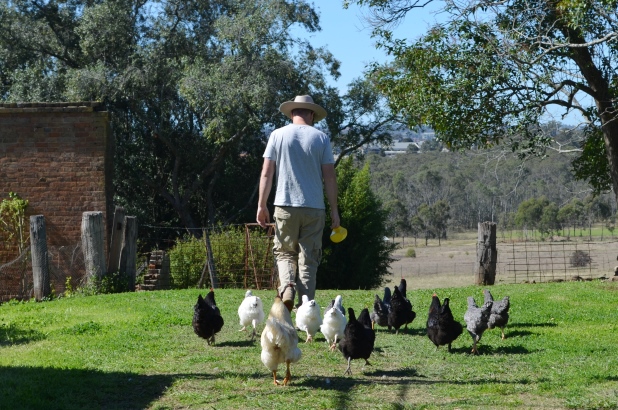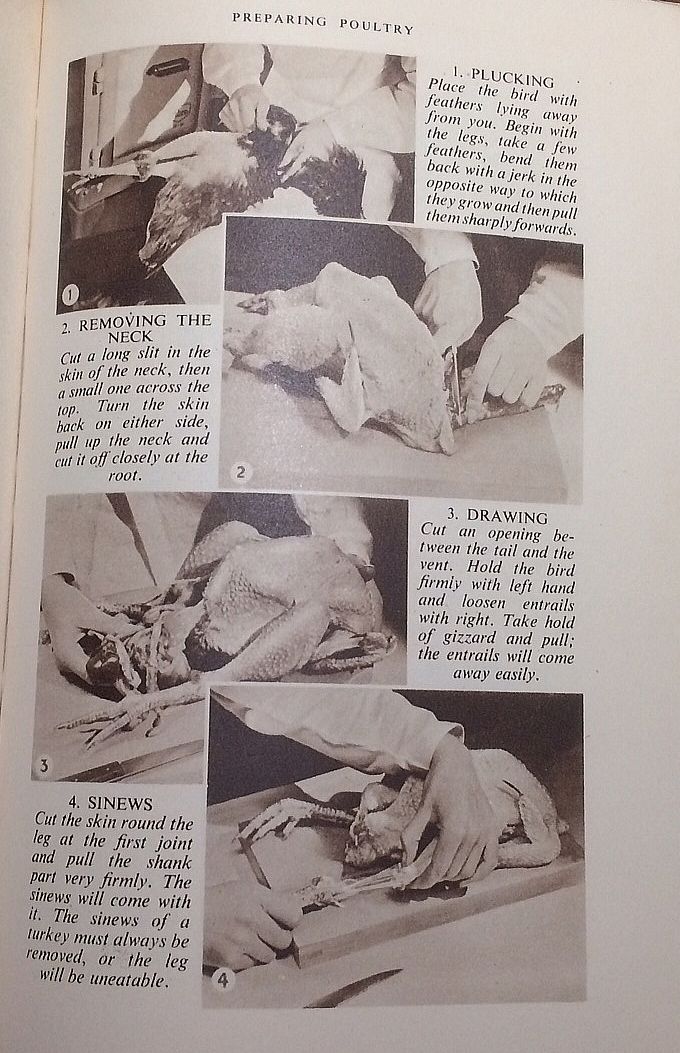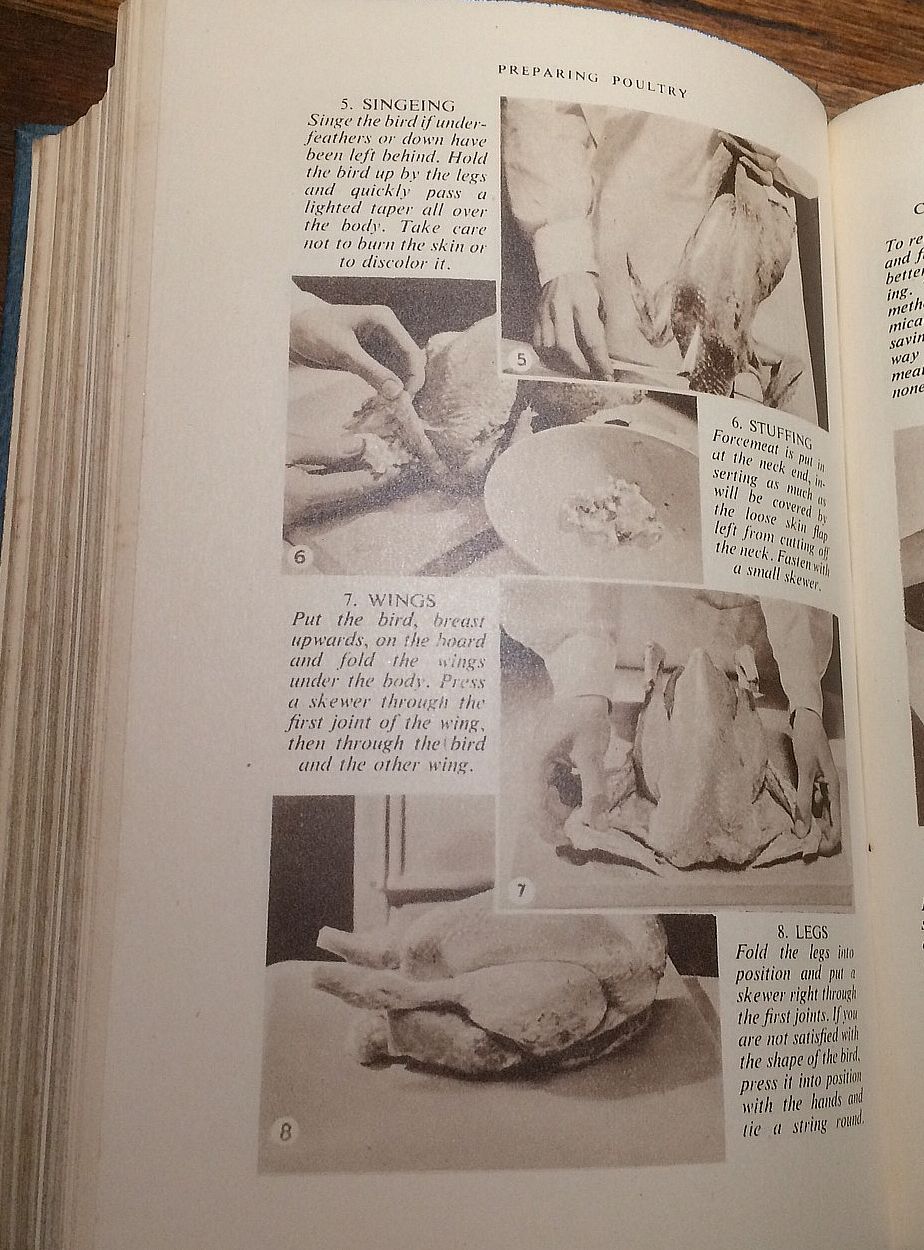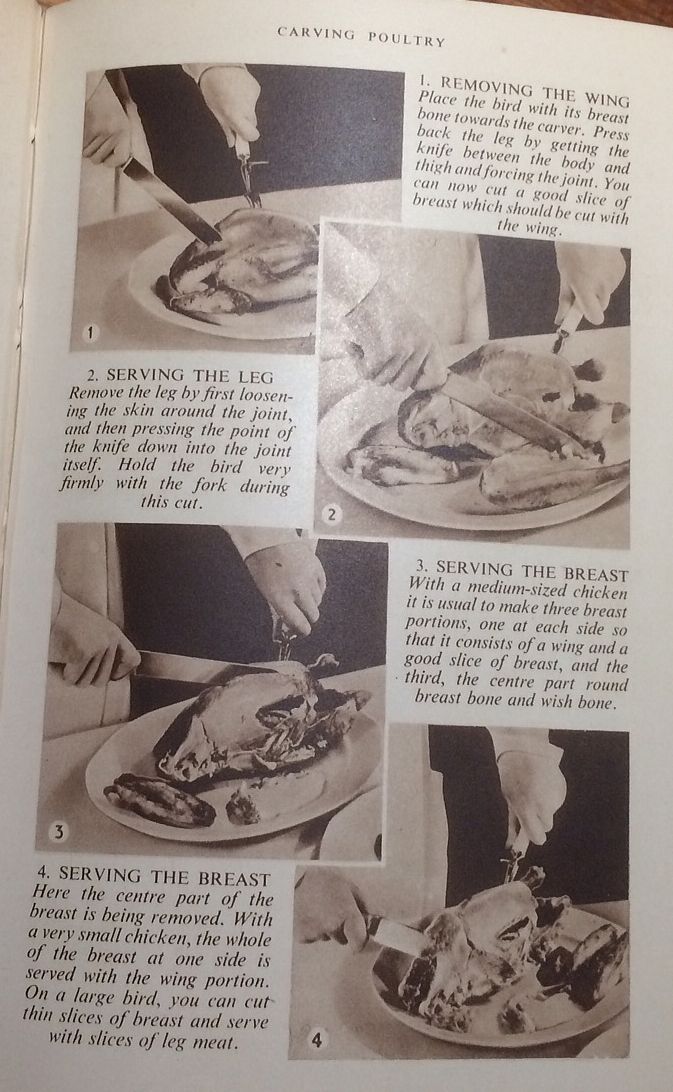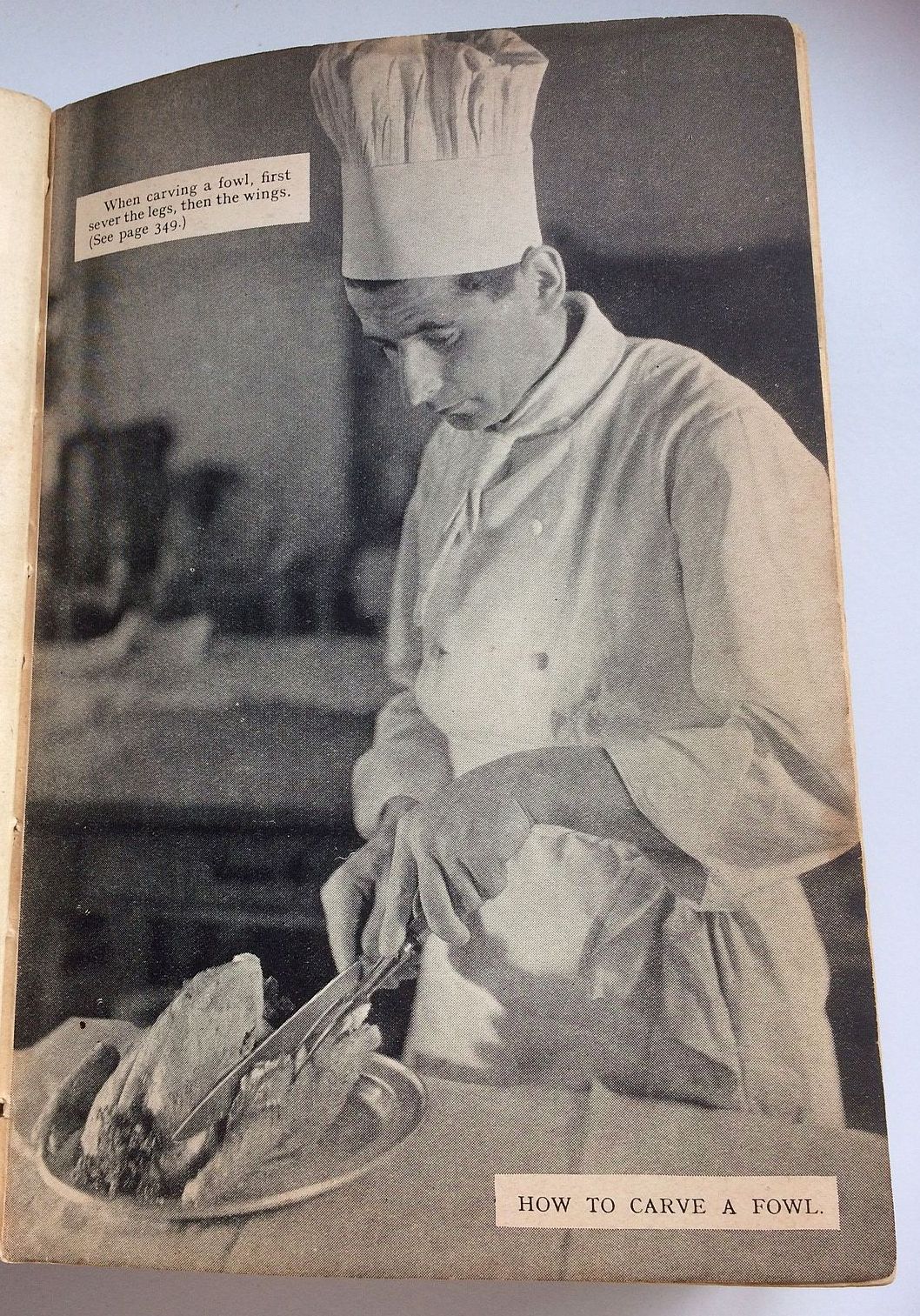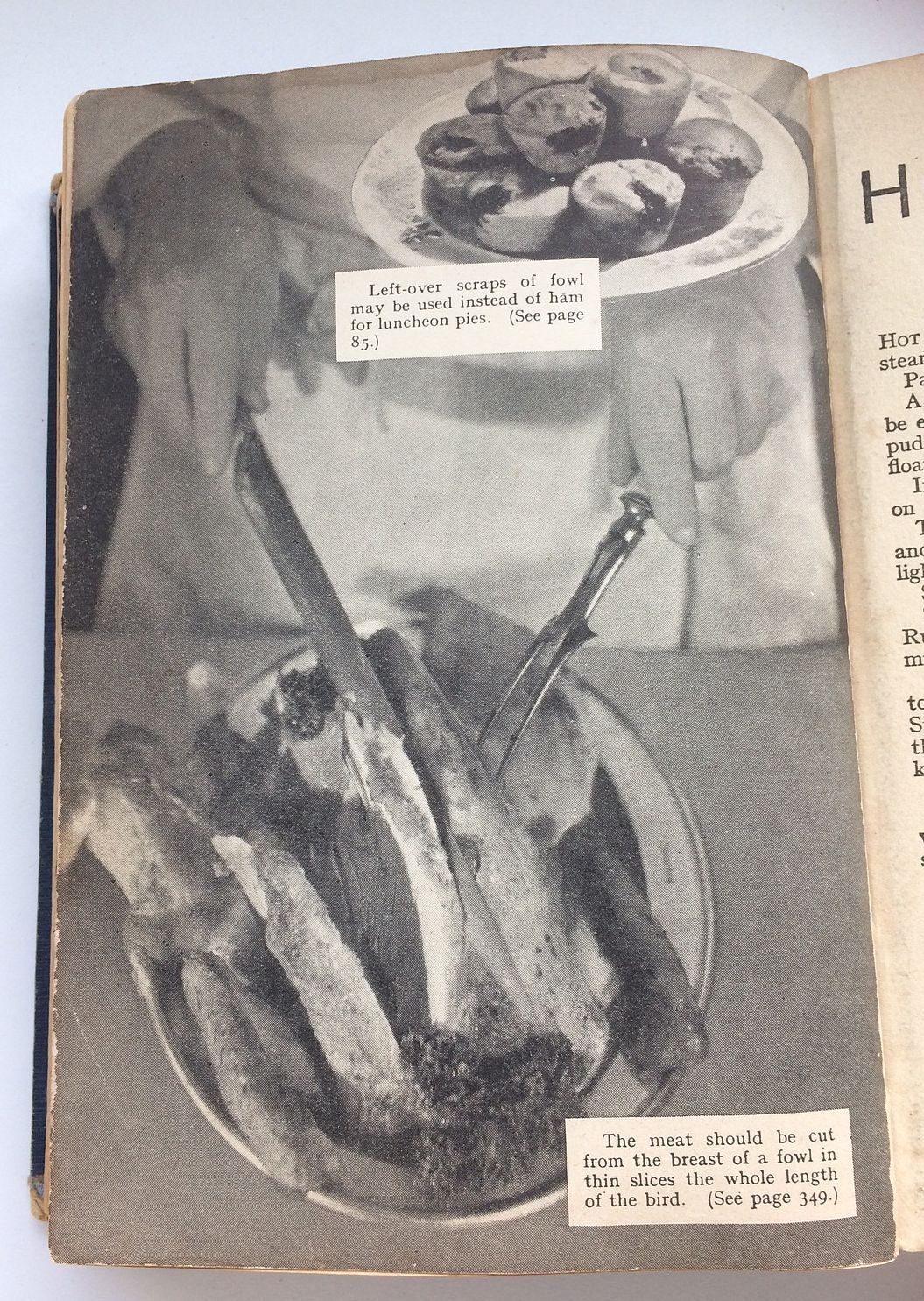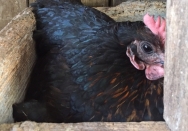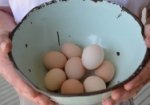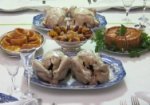Chicken consumption has increased exponentially in Australia since the 1950s, when it was still a select, and for many families, special occasion or luxury food. Thanks to modern production techniques, chicken is now one of our cheapest meats [1]. Not only have chickens reduced in price, the ones we generally buy today have changed in size, form and flavour when compared with the chickens our grandparents were eating.
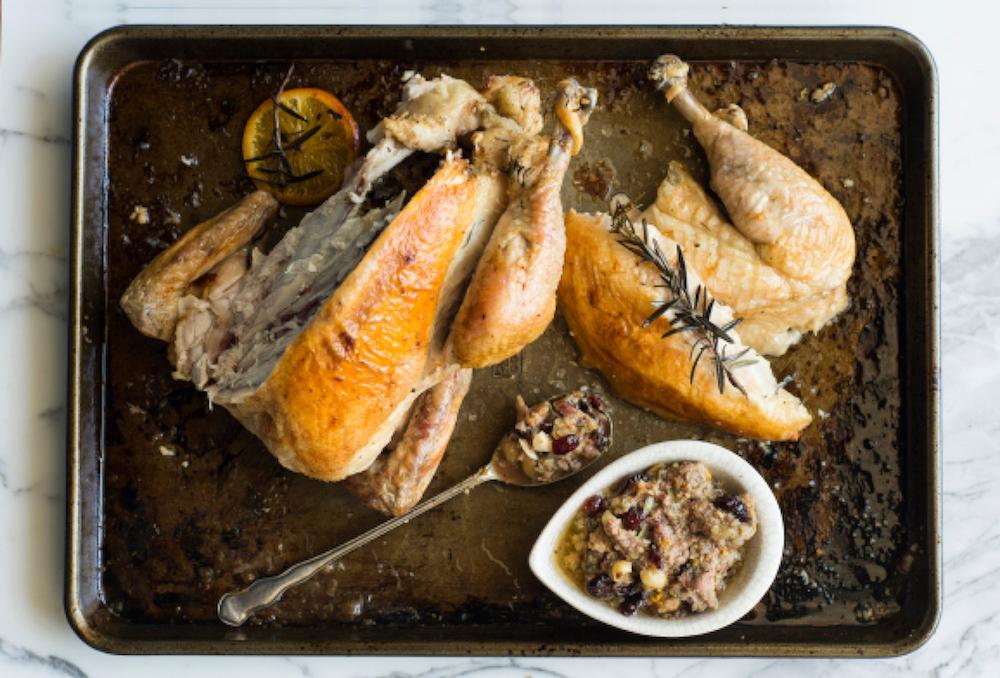
Sommerlad heritage breed chicken, roasted.Photo © Feather and Bone Proivdores
Photographic evidence
It is striking to see the changes in the look, shape and size of chickens in photographic images in Australian cookbooks that were published before the 1970s. Note for example, the images above and below from The Margaret Fulton Cookbook (first published in 1968 [2].
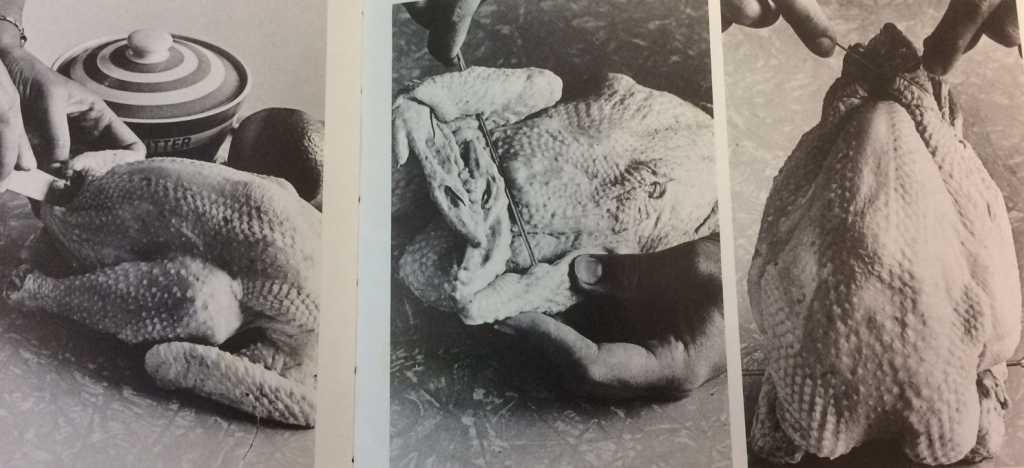
‘To truss a chicken’ in three steps. The Margaret Fulton Cookbook (1976). Revised and updated edition of the 1968 classic now published by Hardie Grant Books.
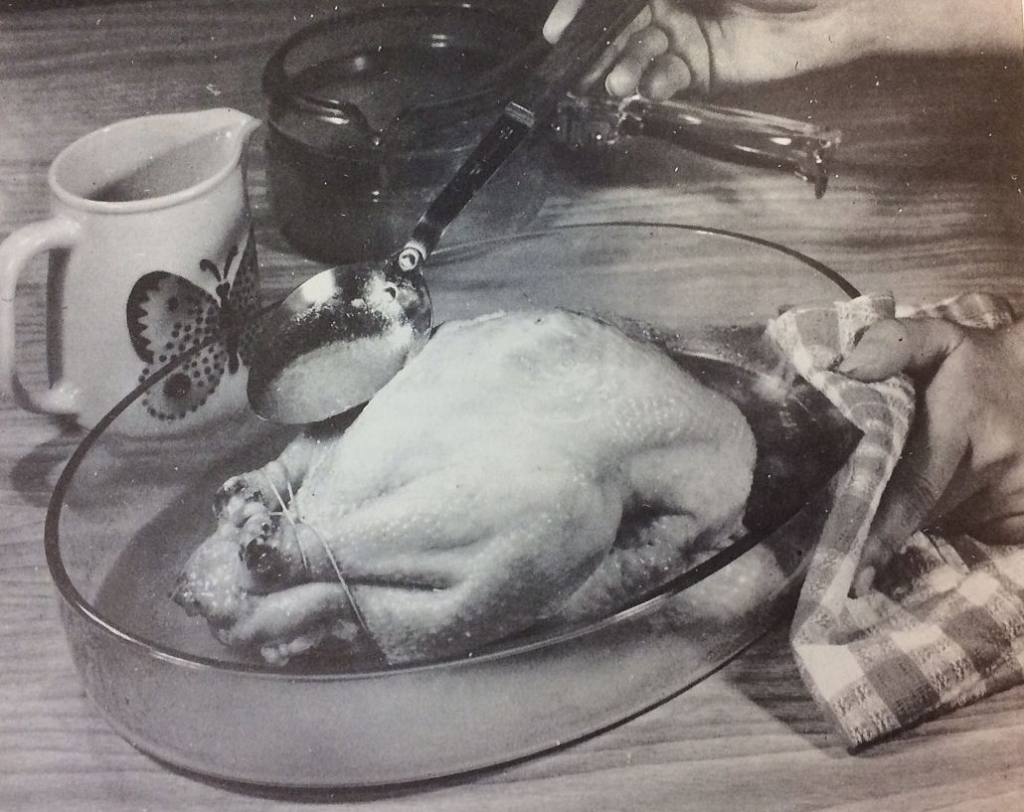
‘Basting a French Roast Chicken’ The Margaret Fulton Cookbook (1976) p. 60. Revised and updated edition of the 1968 classic now published by Hardie Grant Books.
Taking shape
Compared with today’s ‘chooks’, the chickens shown in pre-1970s texts have a distinctly elongated in shape, with slender legs and narrow breasts, whereas the mass produced chickens we now buy have plump legs, and breasts that bulge out from the breast bone. The breast bone on the ‘early birds’ was very obvious, forming a definite ridge rising along the top of the bird when trussed, rather than the noticeably indented ‘cleavage’ centre of today’s commercially produced chicken.
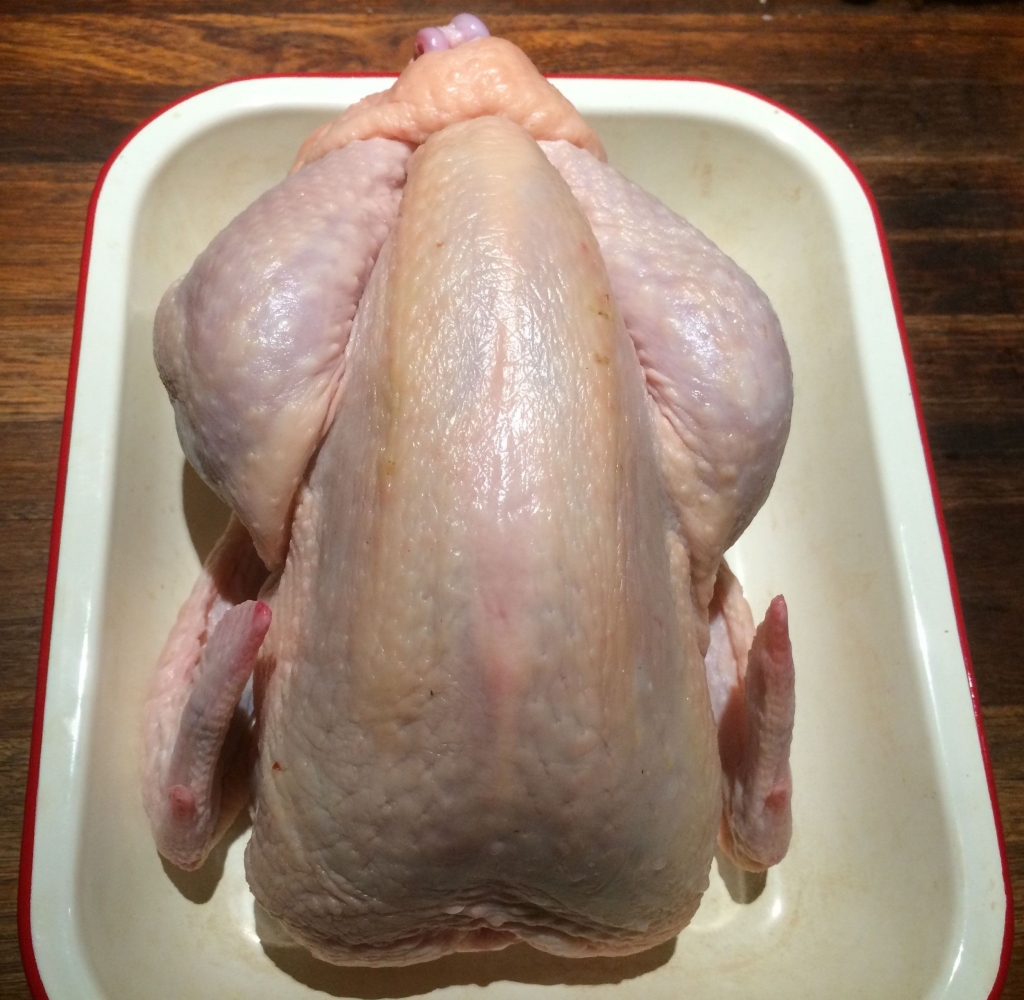
Sommerlad heritage chicken, uncooked, 1.8kg. Photo © Jacqui Newling
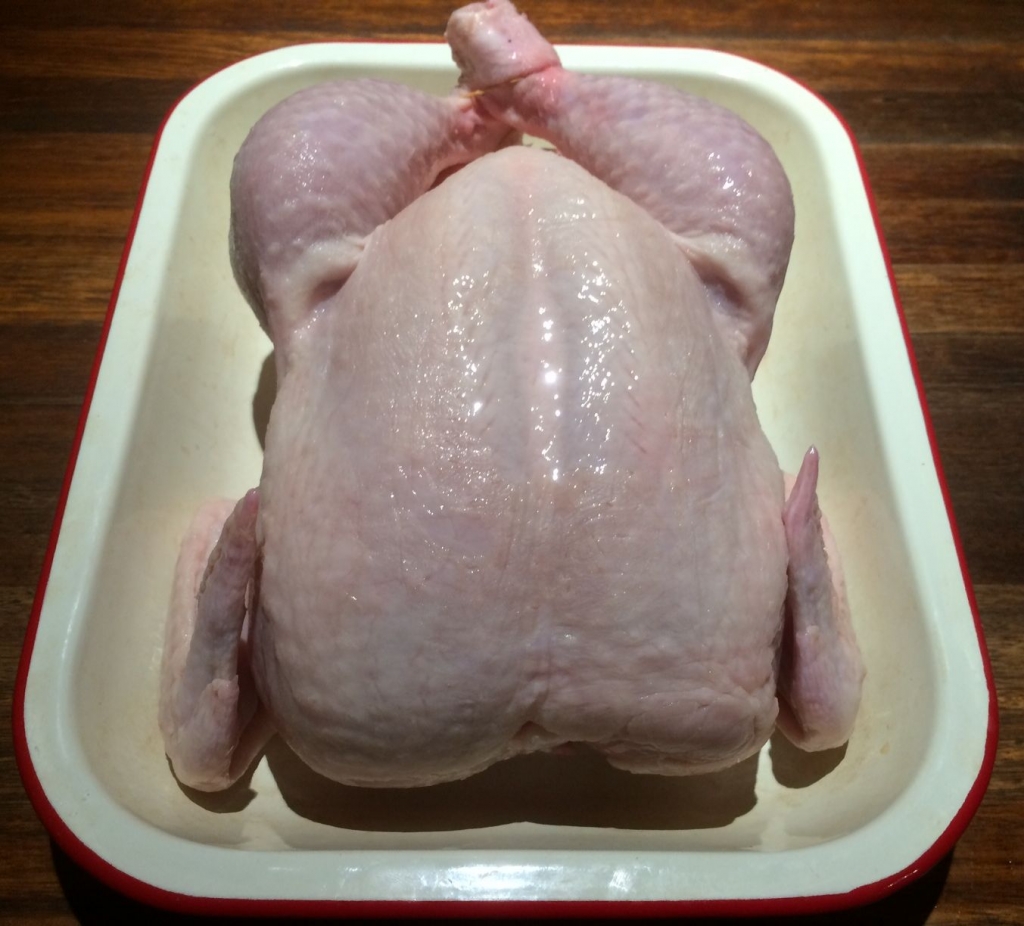
Free range Bannockburn chicken, 1.8kg, uncooked. Photo © Jacqui Newling
Eating history
The chickens we buy today – organic, free range or otherwise – are generally farmed ‘broilers’, bred from the fast-growing Ross and Cobb strains which have been specifically developed for intensive production. They are typically harvested when six or seven weeks old. [5] Heritage breeds are now finding their way onto the market, such as the Sommerlad ‘heritage’ breed (see photo below), which was developed by New South Wales specialist poultry farmers, the Sommerlad family. The Sommerlad chickens are specifically suited to Australian pasture rearing conditions. To develop the breed, the Sommerlad family drew on ‘Australia’s original table poultry breeds’ (which originated in UK, America and China) including the Australian Game, Light Sussex, Croad Langshan and Plymouth Rock breeds. [6] You can learn more about the way they are bred in Feather and Bone Providore’s newsletters.
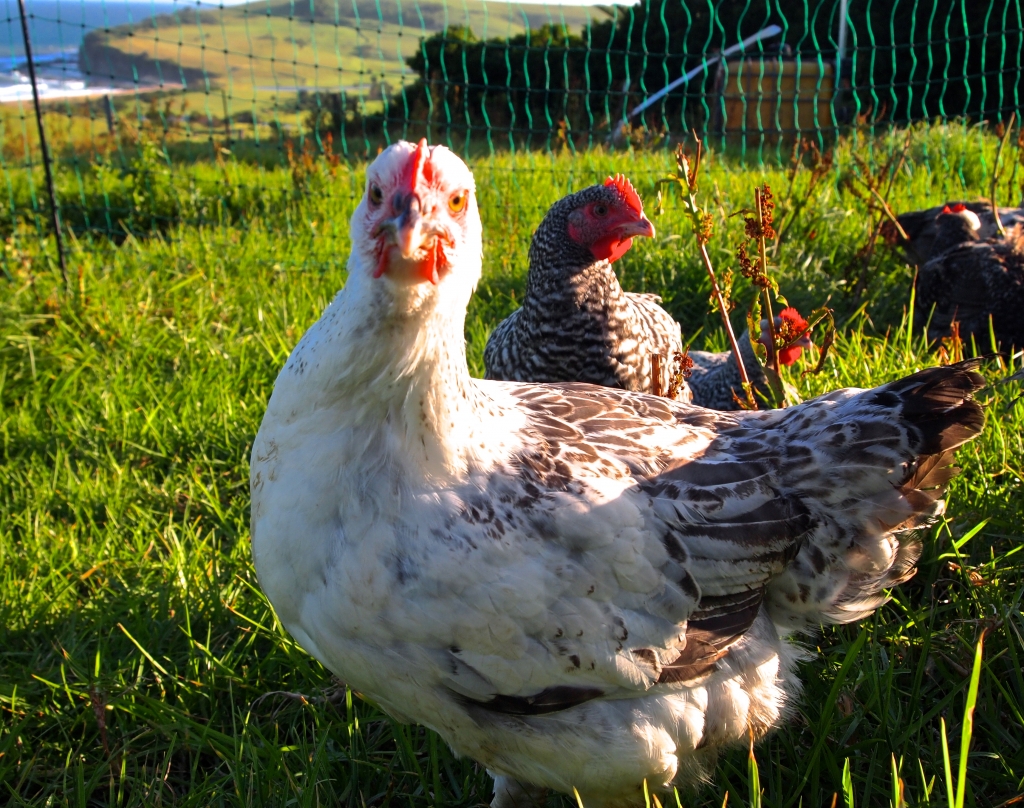
Sommerlad heritage breed chickens at Buena Vista Farm in Gerringong NSW. Photo © Feather and Bone Providores
‘Sommerlad chickens live on pasture for between 12 -16 weeks. This is up to three times longer than conventional white broilers which make up the remainder of the Australian meat industry…. Sommerlad birds have longer legs and more even meat distribution than the breast-heavy white broiler chicken and they are vigorous, athletic and curious, ranging far afield in search of grubs and green pick.’ [6]
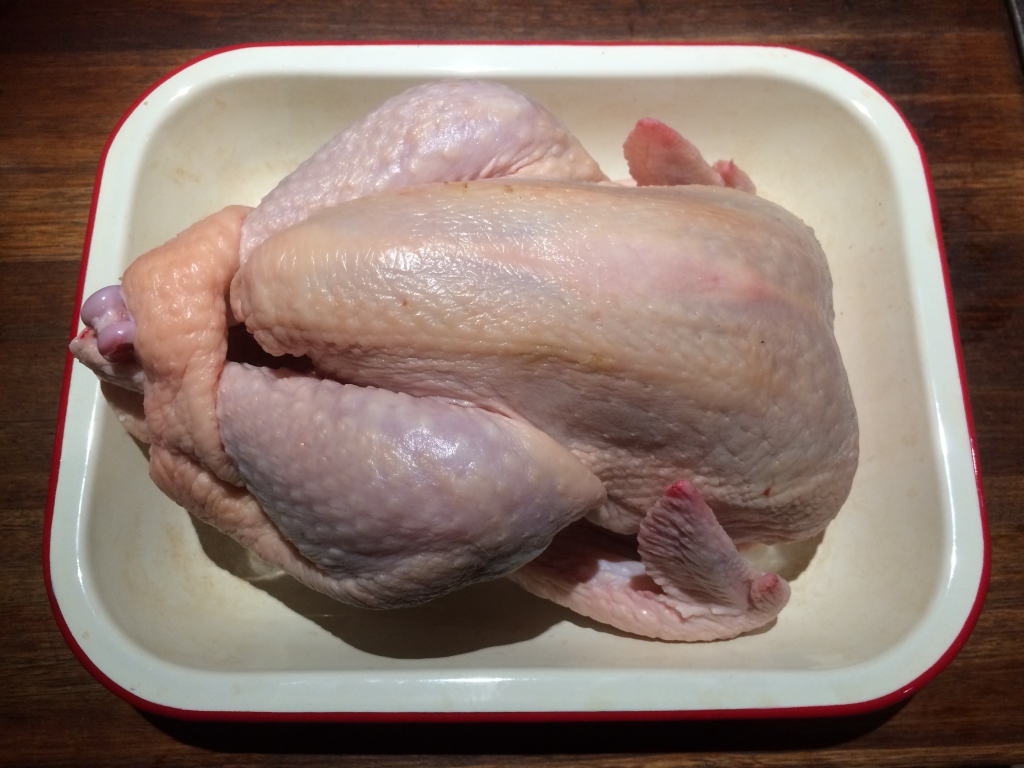
Sommerlad chicken, 1.8kg, uncooked. Photo © Jacqui Newling
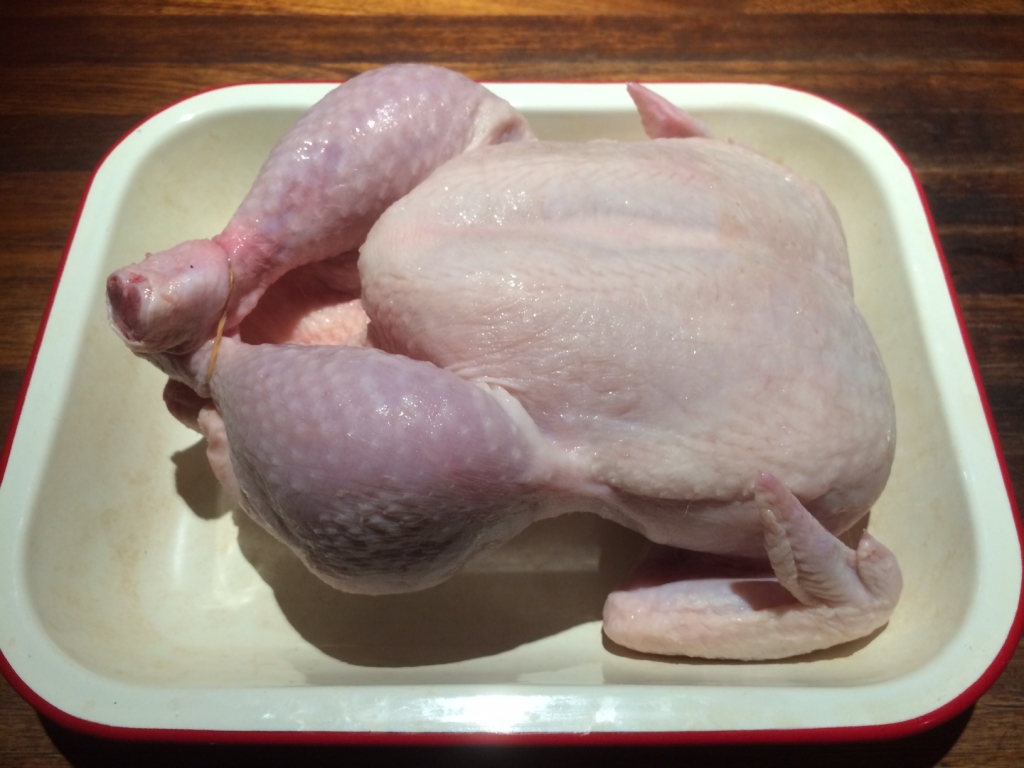
Free range Bannockburn chicken, 1.8kg. Photo © Jacqui Newling
A matter of taste
On first glance the heritage chicken might look ‘scrawny’ compared with a standard commercial one, but the ones I have cooked were succulent, with noticeably more structured in texture, and have wonderful depth of flavour when compared to the modern breed we are used to. It reminded me of pheasant (which I’ve only ever tried twice). This is not to say that the modern breed chicken is less or more flavoursome, just different in nature, the modern bird a little more moist and sweeter rather than ‘meaty’, with less complexity of flavour. If you’ve put them to the taste test yourself, do let us know your experience.
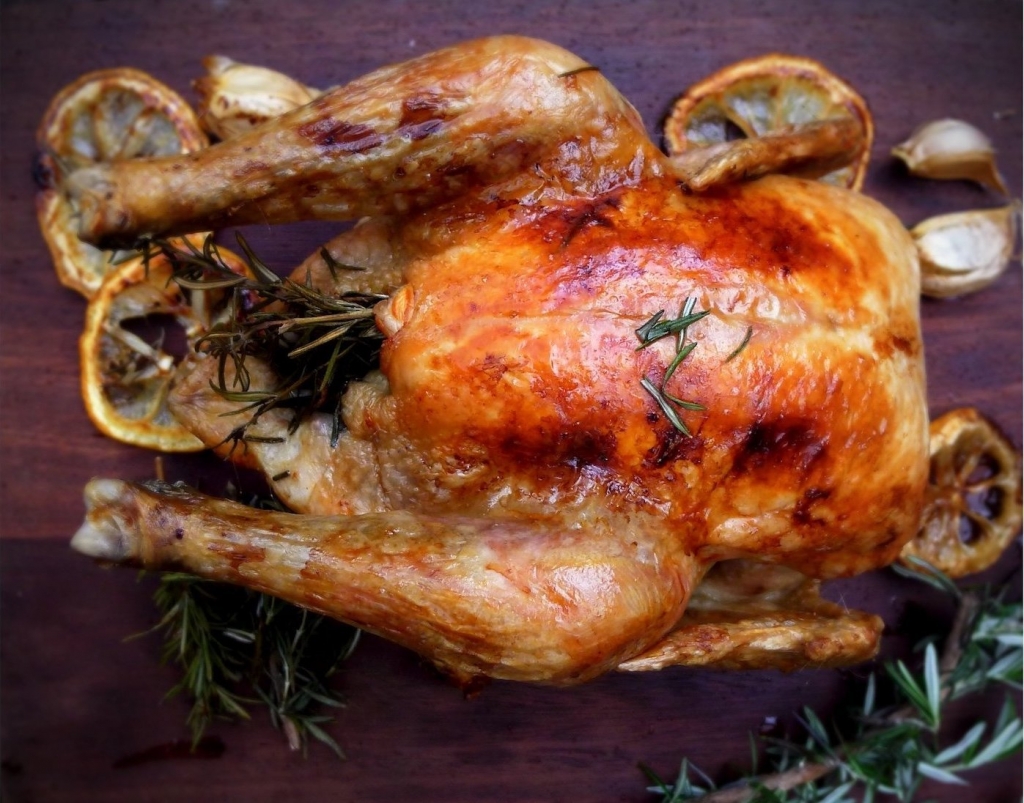
Roasted Sommerlad heritage breed chicken Photo © Feather and Bone Providores
First pluck your chicken…
Australian cookery of today (1930s) reminds us that chickens were often reared at home rather than bought ready processed, as it includes a step by step guide to preparing poultry which begins with 1. plucking the feathers, 2. removing the neck, 3. drawing (removing gizzards and entrails), 4. removing the feet and sinews, and 5, singeing off ‘underfeathers’, before stuffing and trussing the bird. [3]
- Preparing poultry (1). Australian cookery of today, circa 1930s.
- Preparing poultry (2). Australian cookery of today, circa 1930s.
- Carving poultry. Australian cookery of today, circa 1930s.
- How to carve a fowl. Australian Home Cookery circa 1930s. Ideal Home Library. Photo Jacqui Newling © Sydney Living Museums
- How to carve a fowl. Australian Home Cookery circa 1930s. Ideal Home Library. Photo Jacqui Newling © Sydney Living Museums
REFERENCE SOURCES AND FURTHER READING
Special thanks to Laura Dalrymple , Feather & Bone Providores, Grassland Poultry and Shirley Harring, Hand Sourced Rare and Heritage Breeds
[1] Australian Bureau of Statistics ‘Chicken meat production July-September quarter 2017’ 307,498 tonnes http://www.abs.gov.au/ausstats/abs@.nsf/mf/7215.0
[2] The Margaret Fulton Cookery Book, 1976; first published 1968.
[3] Australian Cookery of Today, circa 1930
[4] Australian Home Cookery, Ideal Home Library Series, circa 1930.
[6] Sommerlad Poultry. See also Feather and Bone Providores, Grassland Poultry, Hand Sourced Rare and Heritage Breeds
